
With the harvest from our garden, and stops at roadside stands and farmers markets, my family ends up with a lot of fruits and vegetables that we want to preserve and enjoy throughout the year, not just while they are in season. While I really enjoy canning now and again, in my case, it’s all about freezing fruits and vegetables for smoothies.
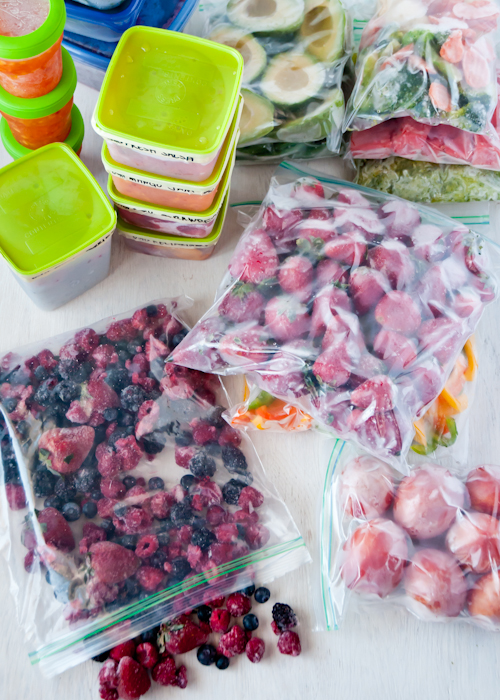
FREEZING PRODUCE FOR SMOOTHIES – A COMPLETE GUIDE
Frozen Food Is Fresher Tasting Than Canned Food
There’s a reason for that. I find that some things are quicker to preserve when freezing, like berries. And other produce is fresher tasting and the quality is a bit better when freezing instead of canning. Plus, confession: I just don’t like canned veggies all that much. So, freezing it is!
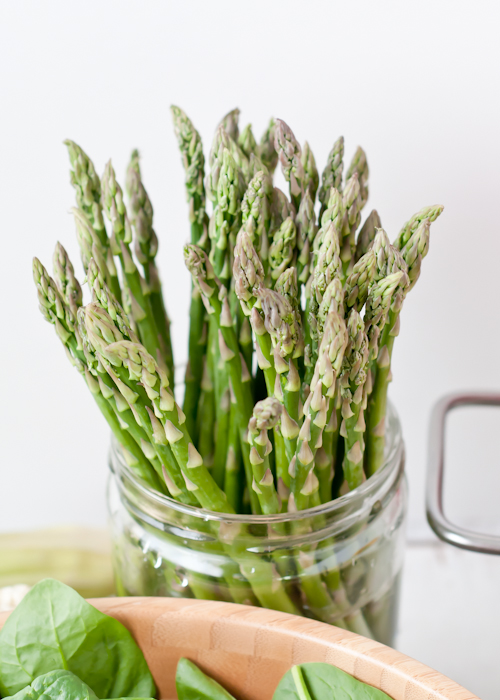

Remember last summer when we covered the basics of washing and storing produce? Consider this the companion to that post.
Freezing Produce Requires Planning & Proper Equipment
As with canning, freezing produce requires a little bit of planning and gathering the proper equipment. While canning relies on heat to kill microbes, which then also destroys some of the nutritional value, freezing delays the growth of bacteria and slows the work of enzymes, which keeps the food preserved. That’s not to say that frozen food isn’t as safe as canned food. It’s just a different way to do it.

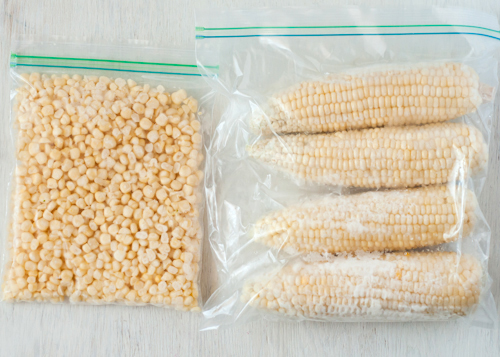

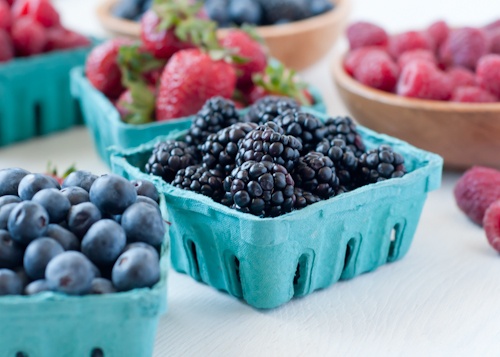
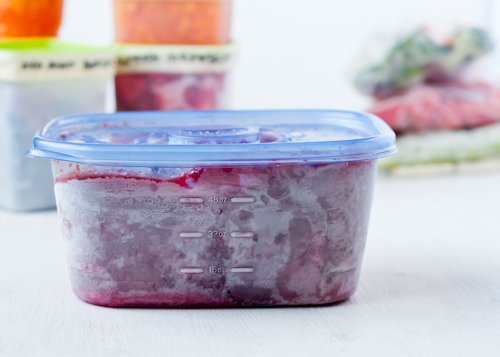
A big plus for freezing produce is that it ends up tasting much fresher and contains more nutrients than canned produce.
But there is a draw back as well. The texture of thawed veggies and fruit can be undesirable. In the process of freezing, the water within the fruits and veggies turns to ice. As it does, it expands which causes cell walls to burst. This can equal mushy texture when thawed.
But there are steps you can take to ensure higher quality frozen fruits and veggies — similar to the ones you buy at the grocery store. And we’ll cover those below.
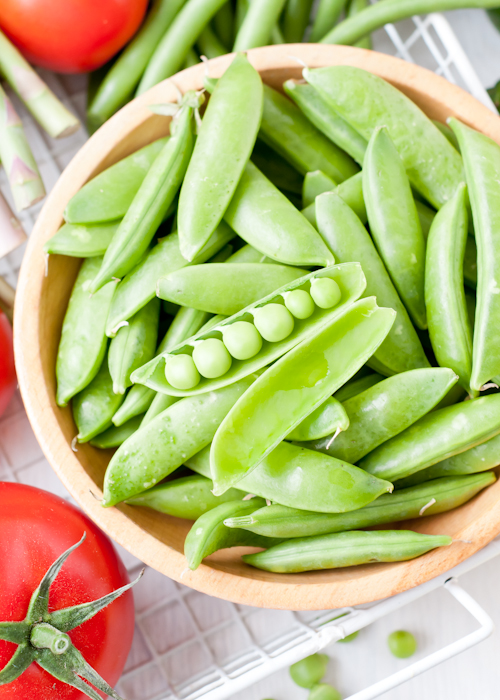
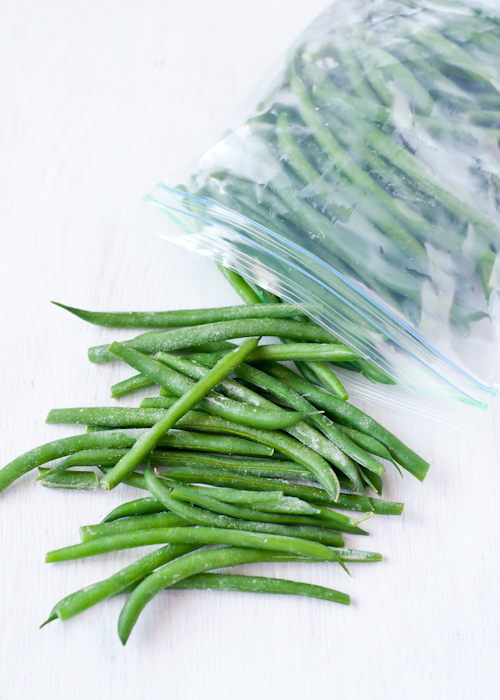
First let’s talk about the materials you’ll need to assemble before you start.

Materials for Freezing Produce
Secret #1: Something great thing about freezing fruits and vegetables is that you don’t really need fancy equipment. Freezer bags come in handy for “dry pack” freezing that doesn’t involve using syrups or purees. Rigid plastic containers, glass containers, and jars come in handy for liquid or semi-solid foods, sauces, jams, and other preserves.
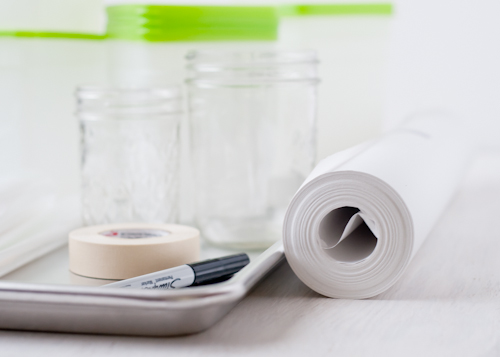
In addition to containers, I also recommend freezer paper, freezer tape, and heavy-duty foil. They come in handy for packaging certain foods and for long-term storage. Long term means longer than the typical 6-12 months. The longer you store the food in the freezer, the more the quality declines, but it is still perfectly fine to eat.
Another essential for me is a rimmed baking sheet. I use it to quickly freeze individual pieces of whole or sliced produce. More on that in a bit.
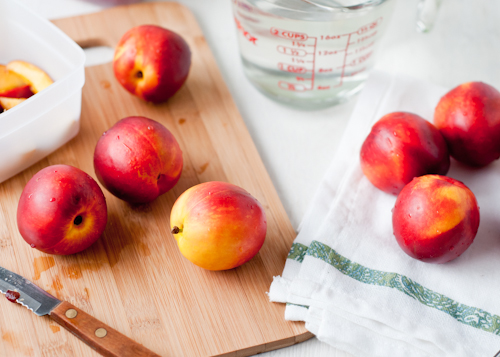
How to Prepare Fruits & Vegetables for Freezing
You’ll want to wash all fruits and vegetables well, especially if you don’t plan on peeling them, and pat them dry with a paper towel or dishtowel. Some fruits and vegetables can be frozen whole, while others need to be peeled, pitted, and/or cut into smaller pieces. A bit of it is personal preference, but some produce definitely does better in the freezer when cut into smaller pieces.
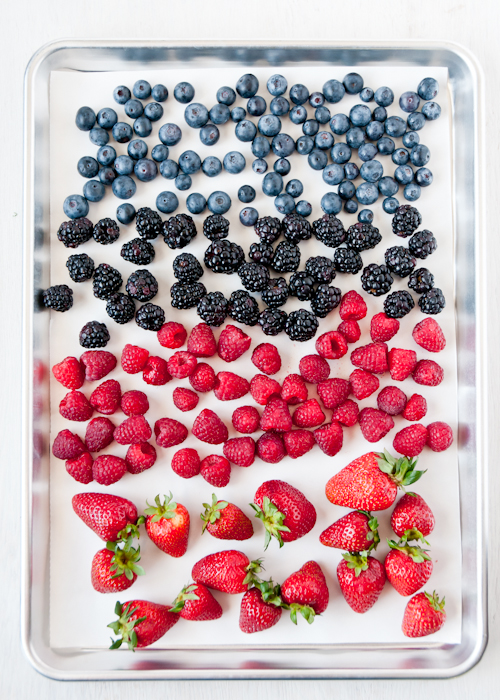
Secret #2: Fruits and veggies that do exceptionally well frozen whole:
Berries (raspberries, strawberries, blueberries, blackberries, currants, cranberries, etc.), bananas, chili peppers, beans, asparagus, tomatoes, and corn.
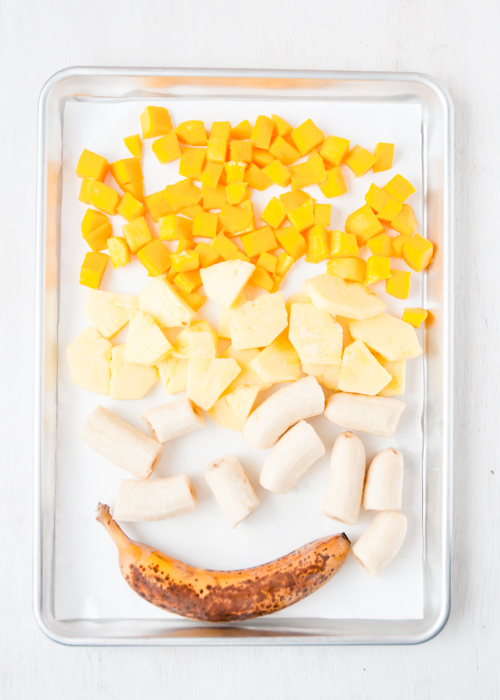
Secret #3: Produce that does well sliced or diced:
Bell peppers, avocado, mango, pineapple, melon, peas, carrots, broccoli, cauliflower, stone fruits (peaches, nectarines, plums, cherries), apples (yes, you can freeze apples!), summer squash, and winter squash.
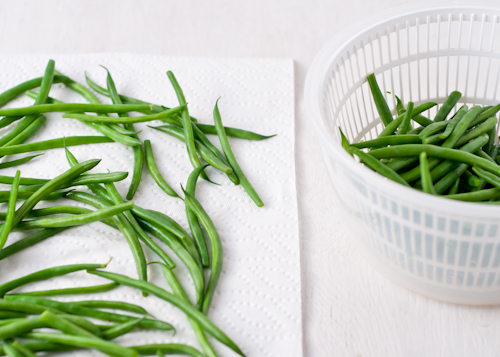
Cut broccoli and cauliflower into florets. Shell peas, trim the ends of green beans and asparagus. Dice or slice peeled carrots, squash, brussels sprouts, and large leaves of spinach, chard, and kale. Rhubarb should be trimmed of woody ends and diced.
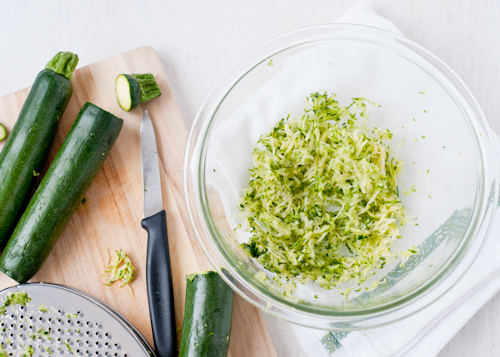
Potatoes can be frozen, but benefit from being shredded. Think: hashbrowns. (Note: I personally don’t like freezing potatoes at home. The quality just isn’t as good.) Zucchini is another veggie with a high water content. It can be sliced or diced and frozen, but I prefer shredding it instead.
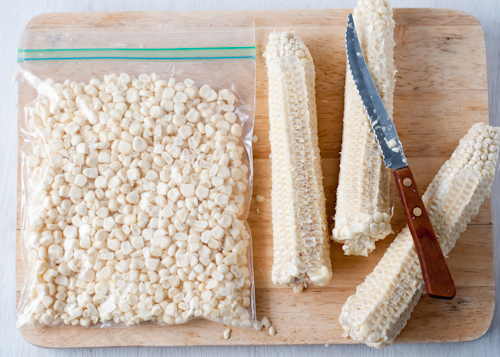
Corn and bananas are pretty versatile when it comes to freezing. Corn can be frozen whole or cut from the cob. It’s totally up to you! I think it’s one of the best veggies for freezing because the quality isn’t as affected by the cold temperatures.
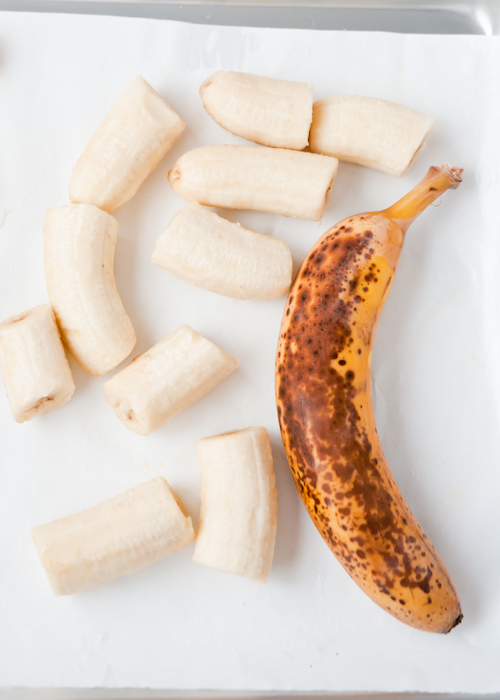
Bananas can be frozen whole and unpeeled, or peeled and whole, or peeled and cut. They’re pretty fabulous that way! I can’t resist adding a frozen banana to my daily smoothie to sweeten it up without adding sugar.
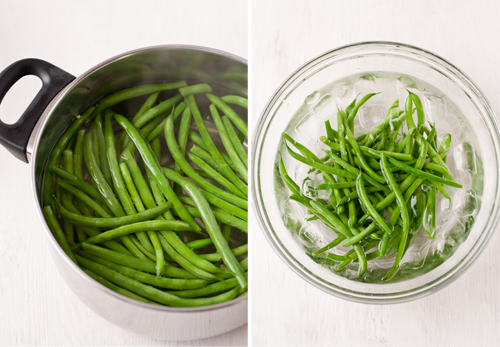
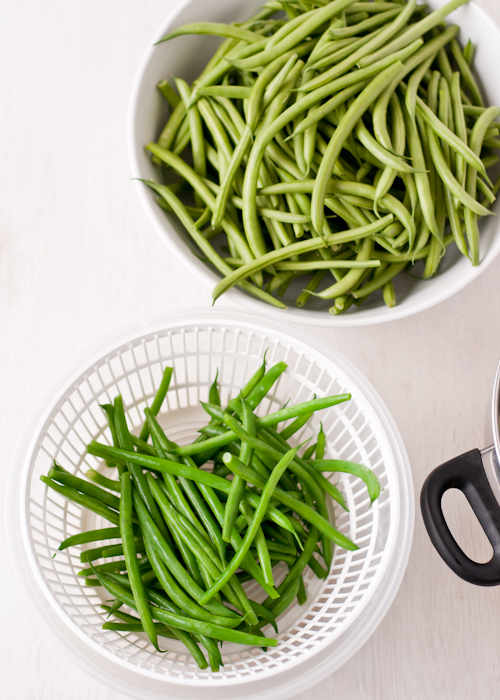
After fruits and veggies have been peeled, sliced and diced, as needed, there are a few more preparation steps.
Secret #4: Most vegetables also need to be blanched before freezing. Blanching is nothing more than plunging vegetables into a pot of boiling water, letting them cook briefly (3-4 minutes max), and transferring them to a big bowl of ice water to stop the cooking.
Why is this important? Remember that mushiness I mentioned earlier? This will help with that, but it also helps maintain the color and nutrients, as well as killing any surface organisms that could lead to spoilage.
Corn (though you could), tomatoes, onions, potatoes (including sweet), and winter squash don’t need to be blanched. And neither do fruits.
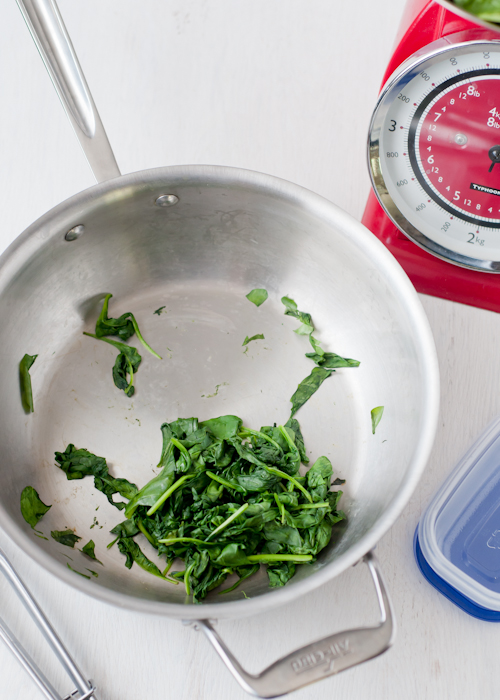

Leafy greens don’t have to be cooked, but they can be. But one thing is for sure, quickly sauteing spinach, for instance, really saves on space! Pictured above is four ounces of spinach cooked and fresh.
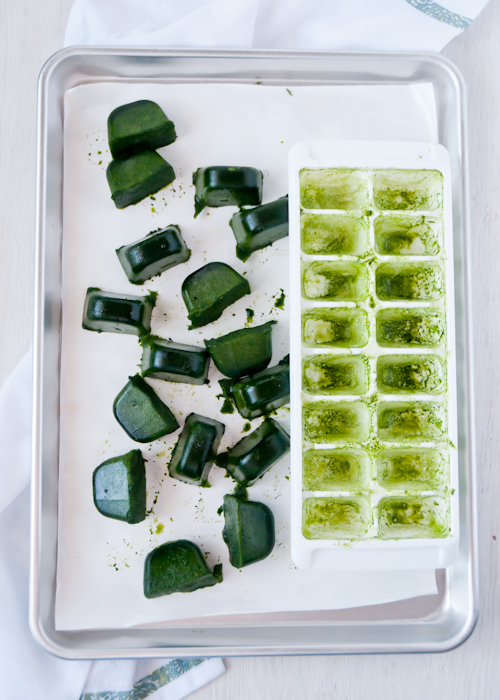
Something I saw a few months ago (and a few of you lovely readers mentioned to me) that I think is brilliant, is making spinach ice cubes to add to smoothies. I usually just put the greens into my smoothie packs, but I finally tried this and I’m hooked! Simply add a whole bunch of leafy greens to a blender with enough water to make a smooth puree and freeze. Easy peasy!
I also like to roast some foods before I freeze them. I’ve done this with tomatillos, plums, tomatoes, and peppers. I will either puree them into a sauce or freeze them as is, juices and all.
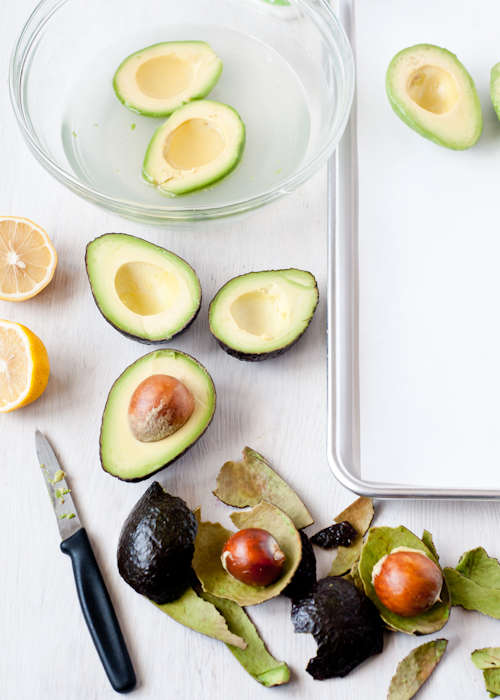
Secret #5: In canning, foods are treated with citric acid, lemon juice, or ascorbic acid to help kill microorganisms and prevent discoloration. The same rings true with freezing. Think of all of your favorite fruits that turn brown after being cut — bananas, avocado, peaches and nectarines, apples, etc. They benefit from a quick dip into acidulated water.

Make a solution of 1/2 teaspoon ascorbic acid (found in the pharmacy or canning section of grocery stores) per 3 Tablespoons of water, or 1 Tablespoon fresh lemon juice in 4 cups (1 quart) water. Sprinkle or dip the fruit with the solution and let dry.
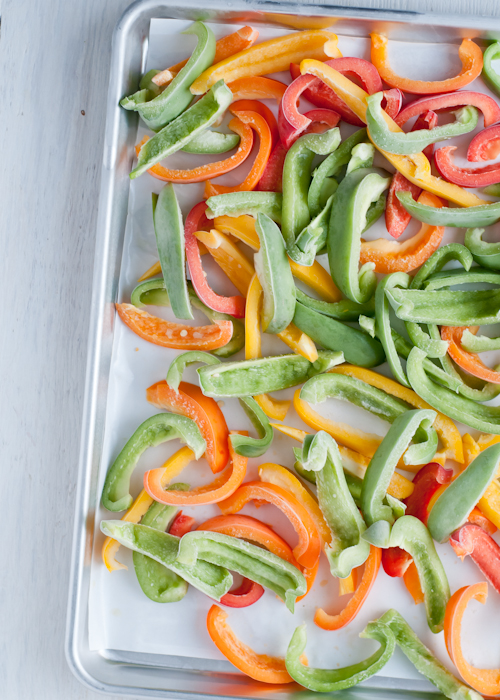

How to Freeze Produce
First up, Dry Pack freezing, where we start by talking about IQF, or Individually Quick Frozen. The idea behind this is simple: if a fruit/veggie is frozen in a single layer (whole or sliced), it will freeze more quickly. Secret #6: Freezing quickly is great because a) fruits and veggies are easy to thaw out if they aren’t frozen together in a big lump, and b) the quality is better after thawing.
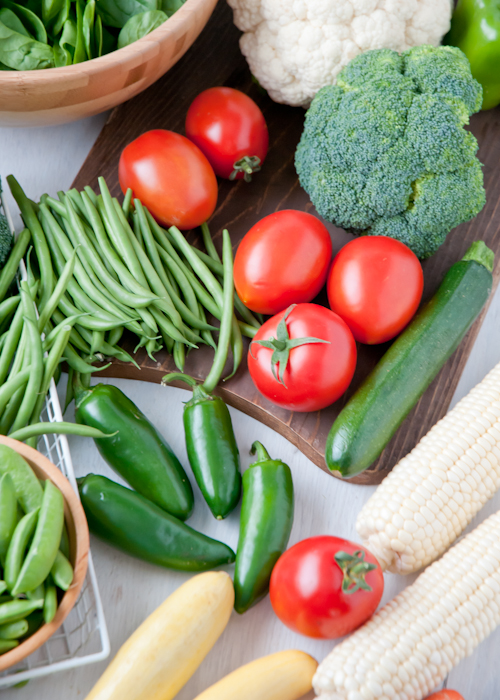
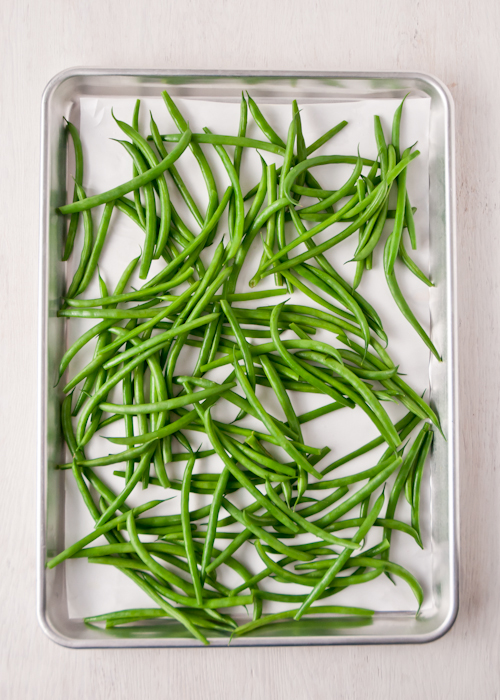
All you do is place everything you want to freeze in a single layer on a lined baking sheet. Lined, so that what you’re freezing doesn’t stick to the pan.
The goal is to freeze the food as quickly as possible. Adjusting the temperature of the freezer ahead of time is a good idea. You want to ensure that it’s as cold as possible — at least 0 degrees F or lower. You also want to make sure there is plenty of air circulation for even freezing, so it’s better not to layer a bunch of bags or containers in the freezer at once. Doing it over the course of a day or a few days is a good idea.
Be sure to not open the freezer as the produce is freezing on the baking sheets. You really want them to freeze as quickly as possible without fluctuating temperatures. When the food is frozen, transfer to containers or bags and place the bags back in the freezer.
Removing air from containers and bags will help keep frozen food last that much longer and help prevent hoar frost from forming.

Secret #7: Another option is Wet Pack freezing, or freezing fruit in a sugar syrup. The recipe for the syrup is the same as you’d use when canning. All of the steps are the same as with canning, except no cooking needed. It’s so easy to do!

Of course I can’t talk about freezing produce without talking about freezer jam. In the winter months, it’s really wonderful to pull out a jar or container of freezer jam made from summer fruit. We really enjoy making jam at our house and it is another great way to enjoy frozen fruit.
I also freeze fruit and vegetable purees (including baby food when my kids were tiny), soups, sauces and other condiments, like fresh salsa.
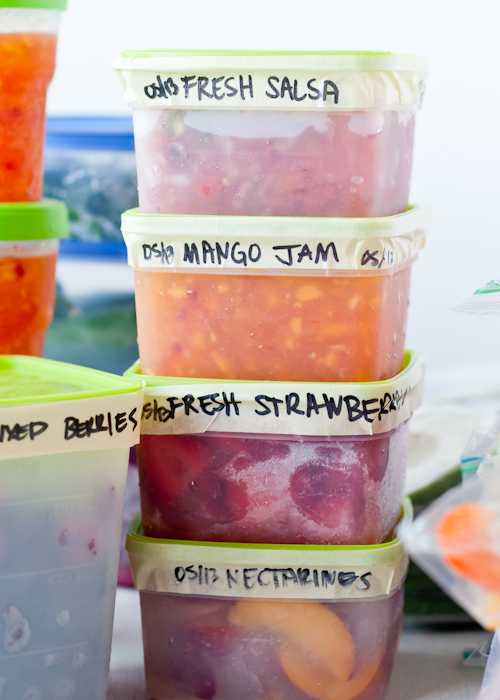
How to Label & Store Frozen Produce
Secret #8: You’ll want to label the bags and containers with the date and the contents. You might think you’ll remember what it is, but six months down the road it might be more difficult to remember what was in each bag or container.
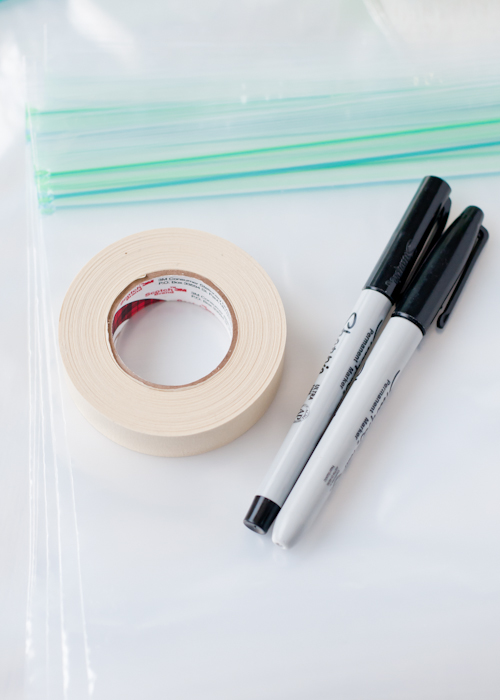
Freezer tape will stay on the containers despite the cold temperature and the moisture. I like to run tape around the containers too, to keep out air and prevent hoar frost. Wrapping bags and containers in foil and taping will also help with that.
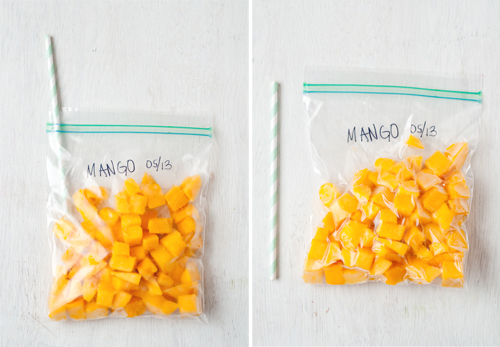
I like to use resealable freezer bags a lot when I freeze produce. They’re easy and inexpensive. Secret #9: Both bags and containers should be packed full. Remove as much air as possible. A trick I learned is to use a straw to suck all of the air from the bag and then quickly close it.
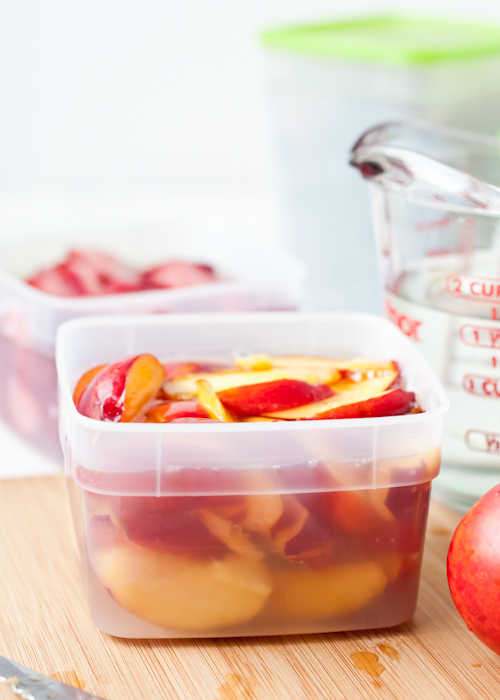
For containers, removing air is a bit challenge without the help of a vacuum device. A vacuum sealer is definitely the way to go for long-term storage — both for bags and containers. It is worth the extra expense to purchase a device if you do a lot of freezing. Removing the extra air and sealing fruit and veggies individually in plastic packaging yields a lot better results than the freezer bags alone. (My grandma swears by it!)
Secret #10: When using containers, be sure to leave enough headspace to allow for the liquids to expand as it freezes.
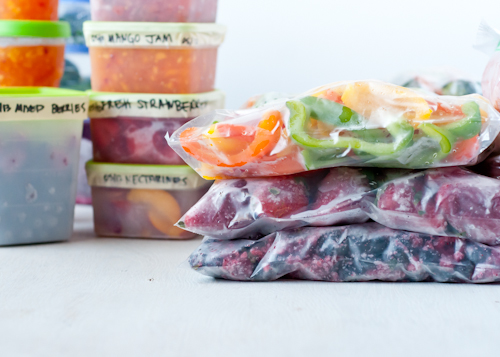
Storage Time & Thawing Instructions for Frozen Fruits & Vegetables
Typically in a basic freezer, frozen fruits and veggies will last a very long time. As time passes, the food doesn’t become inedible, but the quality does deteriorate. If you plan on keeping frozen foods for a long time, a deep freeze might be a better bet as it has lower temperatures and is opened less often.
Secret #11: Fruit will keep well for a year, and veggies will keep for about 18 months. (I’ve had some keep for much, much longer.)
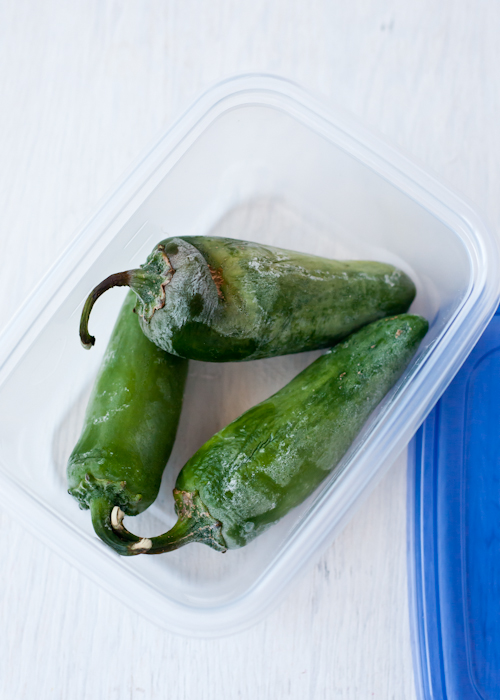
When thawing, know that fruits are better eaten when still a little frozen so they aren’t completely mushy. Or you can cook them into sauces, or add them to smoothies. Vegetables are best cooked straight from the freezer, no thawing.
Some vegetables suffer no ill effects from freezing — corn and peas, particularly. Others will be better in recipes where they will break down and be consumed in smaller pieces, like soups, stews and sauces. There’s nothing easier than pulling a bag of broccoli, carrots and cauliflower straight out of the freezer and toss them right into a Thai curry.
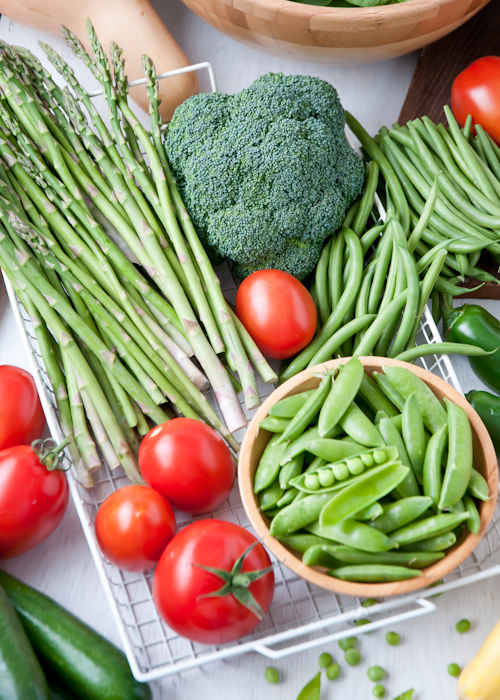
Well there we have it. Everything you need to know about freezing fruits and vegetables for smoothies, and getting your summer harvest stocked away for the winter, .
What about you? Does all this talk about freezing fruits and veggies take you right back to summers at your grandma’s house? Do you prefer canning? Any tips or secrets you’ve learned along the way? Oh. And for those who’ve asked, here’s our favorite blender. I’d love to know!
P.S. — Favorite kitchen tools.
Don’t have time right now to start freezing produce? Pin this for later:
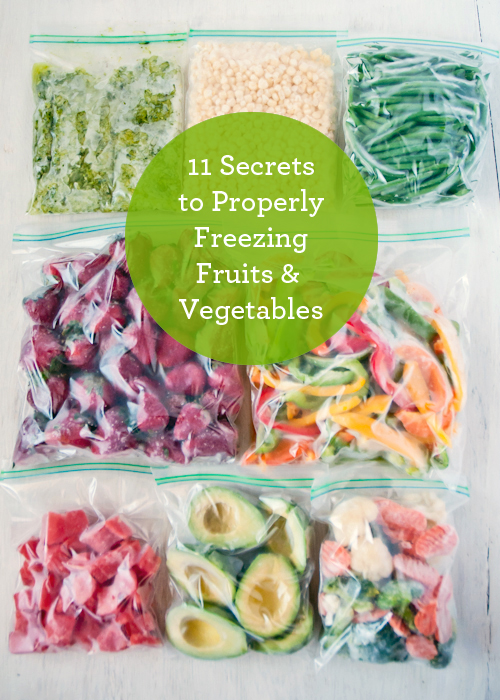
Created by Lindsey Rose Johnson for Design Mom.
Pingback: A Simplified Week : Bathroom Sink - Clean Mama
Pingback: 11 Secrets To Perfectly Freezing Produce | Content inspirations
Pingback: 11 Secrets To Perfectly Freezing Produce | Diy & Crafts
Pingback: Are you properly freezing your produce? – Home and Garden
When I was growing up we would visit my aunt and uncle in PA. They lived in the country, had 5 kids and a very large garden. My aunt had a couple of freezers. She would freeze fruits and veggies in white cardboard freezer boxes then label with a magic marker. Im not sure if they still make those freezer boxes. We lived in a city but my mom would occasionally freeze veggies from markets and she would use either those freezer boxes or Tupperware.
Pingback: Lifestyle: Eating healthily on a budget - sdada.org
Pingback: ideascute » Blog Archive » 11 Secrets To Perfectly Freezing Produce
Pingback: Living Well: 11 Secrets To Properly Freezing Produce | The Home Touches
Pingback: 11 Secrets To Properly Freezing Produce | DIY Home Things
Hi, absolutely beautiful pictures! I am wondering if you would mind sharing how you get such beautiful food pictures? I am a new fan of your site! Thanks so much!
Pingback: 10 ways to get more fruit and veg | Lots-a-day
Appreciate your site and wanted to say thanks for the tips on freezing.
Pingback: How to Save Money by Minimizing Your Food Waste
Pingback: 11 Secrets To Perfectly Freezing Produce | Best Diy And Craft
Pingback: 11 Secrets To Perfectly Freezing Produce - Amazing Foods
https://www.facebook.com/BlowHerMind
Hi I was wondering if you could freeze fruit and veggies as explained above to store for a later date to make baby food? I would store like directed above then when I was ready I would cook the veggies to make baby purees and freeze again in ice cube trays and save? If this can be done how long could you keep the uncooked veggies in the freezer for? And then once cooked, pureed and re-frozen how long will that last in the freezer? Thank you.
Excellent article and very in-depth! I will be trying :)
Just got avocado’s 7 for a dollar (Great price in Michigan). Some will go into the freezer.
Thanks for your advice. I help a lot. God grant you many blessings in your life, from Venezuela, Yosmary
My Mother-in-Law taught me to dip slowed apples in salt water, to keep them from turning brown. Works with pears too!
What a great post! I have had to bookmark it because I am sure i’ll refer to this many many times!
Glad I found you through Skip to my Lou’s post!
Pingback: 11 Secrets To Perfectly Freezing Produce - Amazing Interior Design
This looks beautifully done! However, WARNING *The only thing I would not recommend is freezing anything in the plastic containers. I used to do this until one time I took my veggies from the freezer and dumped them into a pot to steam not realizing the bottom corner of the plastic container cracked off in the freezer and ended up in the veggies. I ended up choking on it. The plastic then went down into my stomach and reeked havoc after cutting my throat up. I only use freezer bags!!!!
Pingback: Gardening Pt VI: Preserving Your Harvest
Pingback: Gardening Pt VI: Preserving Your Harvest | Interior Design Blogs
Pingback: Gardening Pt VI: Preserving Your Harvest ⋆ Steal Mag
Pingback: Gardening Pt VI: Preserving Your Harvest | Club Oferteproprietari.ro
Pingback: 70+ Frugal DIY Garden Resources | Grounded & Surrounded
Pingback: WELLTH WEDNESDAY // SMART SPENDING
Pingback: 11 Secrets To Properly Freezing Produce - Diy interesting
Awesome post with tons of beneficial information! I’m definitely referring to this when freezing fruits/veggies from now on. Thank you!
Awesome post with tons of beneficial information! I’m definitely referring to this when freezing my fruits/veggies from now on. Thank you!
Thank you for the super helpful information! I recently started delving into the paleo diet. My mother and I just bought a share in a community farm. We have carrots and chard coming out of our ears for now. This was all new to me and I appreciate this great advice!
Pingback: ideascute » Blog Archive » 11 Secrets To Properly Freezing Fruits & Vegetables
Pingback: ilovesleep » Blog Archive » 11 Secrets To Properly Freezing Fruits & Vegetables
I wanted to add an idea for freezing peaches. I peel, cut them up, and add 1/4 cup sugar and 2 Vitamin C tablets crushed up. I freeze an 1 gallon bag at a time. This is a homemade fruit fresh. A big bottle of Vitamin C is relatively cheap and this works wonderfully. When my son was young I would defrost the peaches and we ate them for dessert, there were rarely leftovers. I also made them into a pudding by adding tapioca and cooking them. Yummy!
I want to add that I have found that freezing bananas without the peel is easier. I just put over ripe fruit in the freezer banana bread. The defrost mushy and are ready for the batter.
Thank you for all the information on freezing veggies and fruits. My BF tends to plant too many tomato plants which results in us throwing away a large amount of tomatoes since we cannot possibly eat them all. And I love catching 2 for 1 sales at the market for fruits.
One question I have about the water bursting the cell walls problem. Would you recommend dehydrating the fruits/veggies first to remove the water and then freezing? If so, are there some fruits/veggies you definitely would not dehydrate?
Thanks again :)
Thanks for all the great ideas;one thing though,frozen tomatoes cannot be thought to be in the same league as canned in my opinion.
Thanks You,MJ
Love, love, love this post. I’m so glad I found this. Lately, I’ve turned into a “produce nut”, but sometimes it’s hard to eat all of my delicious Farmer’s Market finds before they spoil.
Your secrets to freezing fruits and veggies is high on my “to-do” list. Now, if I could only find a way to extra room in my freezer. Hmmm…(index finger on my chin).
I have tried to freeze corn on the cob and they always seem to come out mushy. I have blanched them and just washed and vacuum packed in plastic bags. I did notice in your post you said not to thaw just throw right into water to cook? Maybe that is what I am doing wrong? I have also had the same issue with cauliflower and broccoli. Any suggestions would be great! Thanks
What a great, thorough post! I do freeze a lot but feeling motivated to do it properly now. The only thing I need now is maybe a printable cheat sheet with all this good info :)
i just cut up a bunch of fresh veggies from garden. Tomatoes, chives, peppers, cucumbers, jalepeno peppers, and celery and made a pico de gallo type salsa. But there is so much and I don’t want to can it. Can I freeze it?
Hi I recently read about benefits of drinking warm lemon juice in the morning & am thinking of freezing lemon ice cubes for quick morning breakfast. My worries is, will the lemon acid react to the plastic ice cube tray? Is there any other safer material to use for freezing lemon juice?
Someone mentioned glass container, but will it crack in freezer? Thanks.
Great information and beautiful pictures! Thank you for taking time to share with us. I have been concerned about freezing in plastic due to the BPA chemical concerns leeching into the food. Have you investigated this or do you use BPA-free plastic bags?
This is a GREAT post. I was looking for freezing tips because I couldn’t remember what gets blanched and what didn’t. Thanks!
Pingback: Faucet Blog
Pingback: Strawberries Blog
Pingback: Ditik Blog